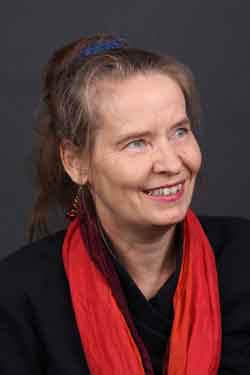 A CSWS-supported book project by Dorothee Ostmeier, University of Oregon professor of German and Folklore, is now in print.
A CSWS-supported book project by Dorothee Ostmeier, University of Oregon professor of German and Folklore, is now in print.
Here is a short summary of its content:
 The book “Gender, Sex, Liebe in poetischen Dialogen des frühen zwanzigsten Jahrhunderts” (Gender, Sex, Love in Poetic Dialogues of the Early Twentieth Century) puts actual poetic dialogues—poems exchanged between lovers at the beginning of the 20th century—at the center of contemporary theoretical debates about sex and gender. The book recovers the poems’ original dialogic setting, and by freeing them from the limitations of conventional aesthetic discourses it empowers the poems to participate in more complex cultural debates. It describes the poetic culture of the early 20th century as inseparable from modernist and post-modernist feminist discourses, and demonstrates how the early poetic dialogues anticipate and challenge contemporary feminists’ thought, and add the vibrancy of lived experiences to actual gender and sex troubles. These range from ecstatic celebrations of intimacy in partnerships to the total disillusionment with romance, from ideologically charged metaphors to the total erasure of their ideological subtexts.
The book “Gender, Sex, Liebe in poetischen Dialogen des frühen zwanzigsten Jahrhunderts” (Gender, Sex, Love in Poetic Dialogues of the Early Twentieth Century) puts actual poetic dialogues—poems exchanged between lovers at the beginning of the 20th century—at the center of contemporary theoretical debates about sex and gender. The book recovers the poems’ original dialogic setting, and by freeing them from the limitations of conventional aesthetic discourses it empowers the poems to participate in more complex cultural debates. It describes the poetic culture of the early 20th century as inseparable from modernist and post-modernist feminist discourses, and demonstrates how the early poetic dialogues anticipate and challenge contemporary feminists’ thought, and add the vibrancy of lived experiences to actual gender and sex troubles. These range from ecstatic celebrations of intimacy in partnerships to the total disillusionment with romance, from ideologically charged metaphors to the total erasure of their ideological subtexts.
The main sections of the book, chapters two to five, explore the poetic exchanges between major representatives of modernist poetry: the expressionist poets Else Lasker-Schüler and Peter Hille (1898-1904), and Else Lasker-Schüler and Gottfried Benn around 1912/1913; the symbolist poet Rainer Maria Rilke and his beloved Lou Andreas-Salomé around 1898/1899 and 1912/1913 and the representatives of new objectivism, Bertolt Brecht and Margarete Steffin, in the Thirties. The book’s selection of poetry covers the Pre-Weimar and Weimar periods of experimentation with avant-garde poetry and lifestyles and establishes for the first time a coherent context for these poets’ debates on sex and gender. The concluding chapter focuses on the Madonna images that circulate through the works of the authors discussed. The Madonna myth presents many facets of femininity: the virgin, the mother, Mater Dolorosa, the whore, the bride, Maria Regina, the Queen, and the Madonna as interceptor and mediator between the human and the divine. The early Twentieth Century secularizes this figuration of the sublime, detects the horrors it creates, and, in the end, empties the myth of all moral or religious connotations.
Dorothee Ostmeier, a CSWS faculty affiliate, is also a participating faculty in the Departments of Comparative Literature and Women and Gender Studies. CSWS supported her research for this book with a 2006 CSWS Faculty Research Grant.

